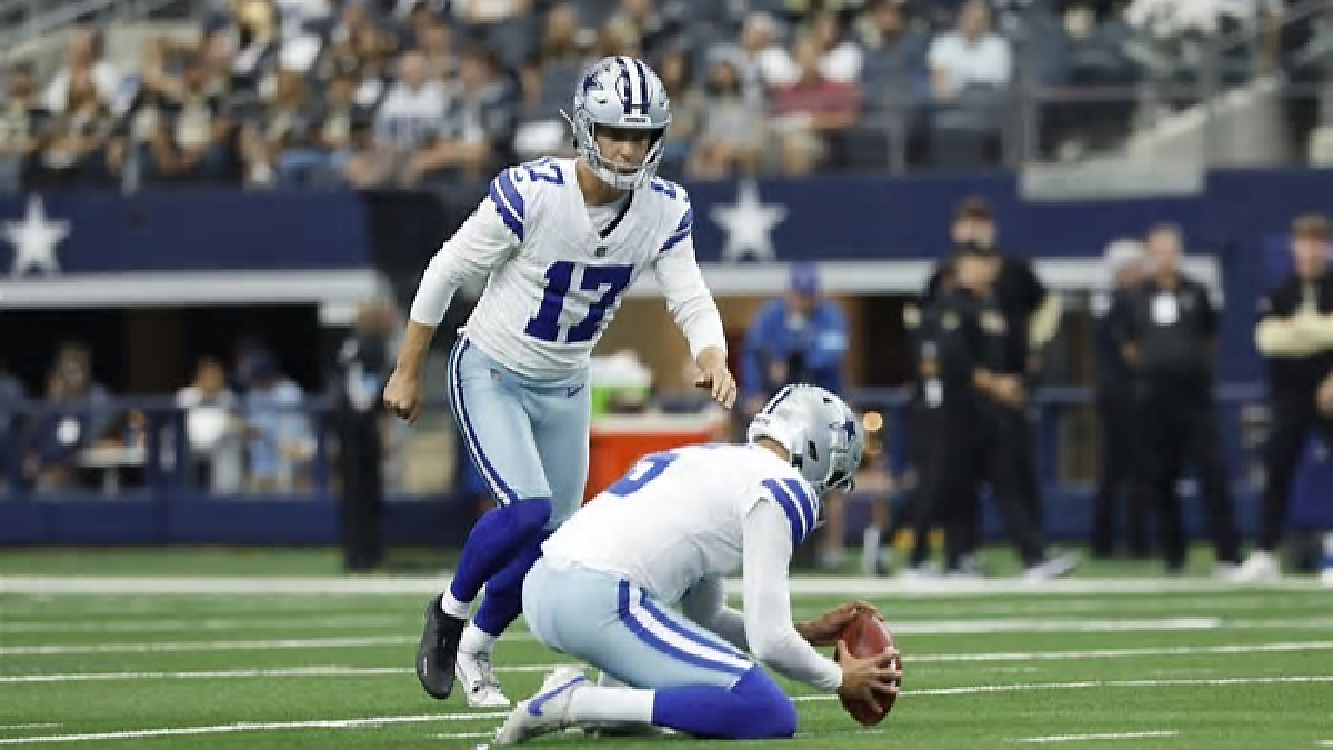Twenty years ago, the 50-yard field was a less than 50-50 proposition. Today, they’re almost automatic.
By Jeff Eisenberg, Senior writer
On Sept. 28, 2008, then Oakland Raiders head coach Lane Kiffin infamously sent out Sebastian Janikowski to try a 76-yard field goal. It fell short by almost 20 yards and the NFL world laughed, contributing to Al Davis’ decision to fire Kiffin just two days later.
Sixteen years later, Dallas Cowboys head coach Mike McCarthy initially wanted Brandon Aubrey to attempt a 71-yarder just before halftime of the team’s season opener two Sundays ago. When McCarthy ultimately decided it was too risky, the NFL world didn’t laugh. Rather, it screamed for him to reconsider.
Those contrasting reactions reflect how ridiculously good NFL kickers have gotten over the past decade or two. They’re now hitting long-distance field goals with the ease of Steph Curry sinking an impossibly deep 3-pointer or Scottie Scheffler bombing a 300-yard drive down a fairway.
Thirty-nine times during the first two weeks of the 2024-25 season, NFL kickers have lined up to try a field goal from 50-plus yards. They’ve converted all but four of those kicks, with the most accurate kicker in NFL history, Justin Tucker, improbably responsible for two of the misses.
Never before have NFL kickers hit 35 field goals from 50 yards or beyond in a two-week period. As recently as 2006, they made only 40 field goals from that distance in an entire season.
Never before have NFL kickers made 89.7% of their 50-plus-yard field goals during the opening two weeks of the season. As recently as 2007, the league’s kickers missed more field goal tries than they made from 50 yards and beyond.
Yes, kicking stats tend to wane over the course of a season as the weather turns blustery and field conditions worsen, but there’s reason to expect this trend to have staying power. Many NFL coaches appear to trust modern kickers from distances they once would have deemed too big a gamble. And with the NFL’s new touchback rule giving the receiving team the ball at its own 30-yard line, teams need only a single explosive play or a couple first downs to cross midfield and give their big-legged kicker a chance.
If this field-goal explosion doesn’t slow down, it will raise questions that would have been unfathomable not that long ago: Are NFL kickers getting too good? Might the league need to explore doing something to make field goals less automatic?
(Grant Thomas/Yahoo Sports illustration)
Kicking is no longer an afterthought
When he first tried out to play football in ninth grade, Michael Husted recalls the coach asking all the players if any of them could kick.
At first, Husted kept quiet because he envisioned playing quarterback or receiver. Only after no one else put their hand up did Husted raise his.
“I play soccer,” Husted said.
“Alright, you’re our kicker!” his coach responded.
The first time Husted kicked in front of his team, the only real instruction he received was to take three steps back, two steps over and kick the ball. It sounded easy enough to Husted until he went to plant, lost his footing on the wet grass and fell on his butt.
After a couple better attempts kicking the ball both straight-on and soccer style, Husted asked his coach which way he preferred. The coach told Husted, “Son, I don’t care if you kick it with your ass. Just get the ball through the uprights.”
Michael Husted’s nine-year NFL career included stints with Tampa Bay, Oakland, Washington and Kansas City. (Photo by Brian Cleary/Getty Images)
That inglorious introduction to place kicking more than three decades ago was how Husted’s path to the NFL began. He blossomed into an all-state kicker at Hampton High, walked on at Virginia and carved out a nine-year NFL career.
Husted, now a kicking coach, chuckles when describing how different the kicking landscape is today compared to when he grew up. The stereotype of the scrawny, unathletic kicker has gradually eroded. The level of athlete drawn to the position has improved so much that modern NFL kickers might flaunt a 42-inch vertical on social media, bench press 225 pounds 25 times in a row or run a 4.79-second 40-yard dash.
Today’s top young kickers often specialize in the position as early as middle school and benefit from increased access to private lessons and instructional camps. Those who can afford it often hire a former NFL or college kicker to help them hone their technique. Others might splurge on a trainer who can design workouts specific to the kicking position or a sports psychologist who can recommend ways to visualize success.
“When I was coming out of high school, there was maybe one kicking camp in the whole country,” Husted said. “Now there’s a pop-up shop on every corner.”
As the caliber of kickers entering the NFL has improved, so has the conditions they encounter when they arrive. Advances in grass maintenance and field turf have provided kickers a pristine surface. The K-balls used for kicking are less slick and better broken-in. And then there are the other specialists who snap and hold the ball.

